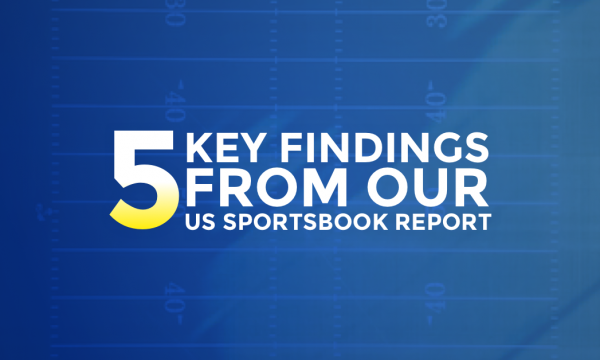
If you’re using social media as a way to distribute content, engage with audiences and drive traffic, you cannot help but have noticed that your organic reach has diminished in recent years.
For some time, many brands and marketers have wrongly equated the size of their following with the size of their potential reach. They argue that with 100,000 social media followers, they have the potential to reach 100,000 people who are actively engaged with the brand.
Unfortunately, whilst that may stack up as a sound theory, it isn’t the case in practice. In reality, social networks are increasingly rationing how much your message is exposed to the audiences that you have built up.
The major social networks have either introduced or suggested complex algorithms that essentially sort through the thousands of pieces of content that are posted every minute of every day; and the result is that brands have seen the organic reach of their content plummet.
Social reach is diminishing
The impact of these social media algorithms is striking.
In fact, across the board, content reach fell from 12.05% of a brand’s Facebook audience in October 2013, to just 6.15% in February 2014. That means that branded content in February 2014 was reaching just half of the audience that it was five months prior.

For brands with more than 500,000 followers, that figure now stands at just 2%. Out of every 100 brand followers you have, 98 of them are missing your message entirely.
There are varying reasons for this, with both natural factors and deliberate intervention from the respective social networks being a factor.
Sheer volume of content
Facebook in particular has been quite open about its algorithm, and argues that the sheer volume of content now being published on the platform will naturally result in diminished reach. It claims that its algorithm has to sort through more than 1,500 stories that could appear in a person’s News Feed each time they log onto Facebook and that, for those users with a lot of followers, as many as 15,000 potential stories were all vying for attention every time that person has logged on.
The commercial factor

Facebook has made no secret of the fact that its algorithm favours personal content over commercial and branded content. A user is much more likely to see a friend’s holiday photos than the latest fashion snaps from a High Street retailer.
This has led to accusations that Facebook has deliberately designed its algorithms to effectively force brands to pay to have their content amplified. Facebook, for the record, has denied that commercial reasons are the motivation behind this change, and that instead, it is simply trying to preserve the user experience. All social networks see their user base as their biggest asset and it ultimately needs to protect the user experience as much as possible, which is why social networks claim that these algorithms are to reduce content spam, promote personal content and deliver a user experience that “is most relevant to them”.
Other social networks are moving towards a similar algorithm-powered system. Twitter launched the first phases of an algorithm in late 2014, moving away from its original ‘real time feed’ model, whilst Instagram announced its own algorithm in March 2016.
The message from the social networks is clear; if you want to get your content seen, more often, you need to put your hands in your pocket to put that content in front of the audiences you want to reach.
Overcoming this challenge
If you’re producing content that is only reaching two in every 100 of your target audience, then you’re probably going to find it difficult to justify an investment in content long-term at board level. What you need to do is reassess what you want to achieve with your content, and then build a distribution plan to achieve that aim.
Define your objective

What does success look like? How will you judge the effectiveness of your content marketing strategy? The answer to these questions are the starting point of your entire content marketing strategy, because your entire content plan, your audience targeting and your distribution strategy will need to be focused around these key goals.
Knowing the objective of each content campaign is vital to ensuring that you invest in the right distribution channels and dedicate the necessary resource to getting your content seen. If you don’t know why your content exists (and just a hint, the answer is not “because your agency told you that you needed some”) and don’t know what “success” looks like, then it becomes increasingly difficult to justify the investment in content marketing.
Your objectives, and your idea of success, can be whatever you want it to be - whether that’s brand awareness, engagement, driving traffic or generating revenue. But whatever it is, you need a clear idea of what your objective is if you are going to develop an effective distribution strategy.
Resource your distribution strategy
There’s not much point in having the fastest racing car if you don’t have enough fuel to reach the finish line. A lot of brands are investing heavily in producing huge quantities of quality content, but not investing in the ‘fuel’ that actually makes this content move.
You can no longer rely on organic to push your message to your audiences. There is too much content in the market, the flow of your message is being controlled by external forces, and it is too easy for your audiences to ignore or avoid.
So you need to treat content marketing, and digital content in particular, in the same way you would treat any of your above-the-line marketing activity. You wouldn’t launch a TV campaign without some consideration for buying space, planning media distribution and earned media coverage, and the same applies to your digital content. Spend time identifying the resources that you will need (both skills and financial) to make your content move.
Targeted distribution
Targeted distribution is all about using audience insights to target the right audience at the right customer persona. This is what makes paid content distribution much more effective and makes it easier for you to demonstrate a return on investment from content marketing.

If you’re a sportswear retailer selling football shirts, it isn’t enough just to target football supporters. A Manchester United supporter is not going to respond positively to a piece of content that prominently features a rival club. Instead, you need to use content to pinpoint supporters of each and every club you are selling shirts for, and create targeted content and ads for each one.
It’s a simplistic analogy, but many advertisers are doing exactly this with their paid content, social advertising and retargeting campaigns.
But having identified our audience personas and how they behave, we can segment these personas and take a situation that is the result of very broad customer segmentation (“our customers are football fans”) and broad content messaging (“as a football fan, you will love this”), and optimise a message for that audience based on the behaviour traits that we would expect for that group.
This level of segmentation can be applied to almost any form of customer activity. For instance, travel companies can assign different segments for users that searched for different classes of aircraft cabin or hotel, ensuring that those that searched for premium class flights or five star accommodation aren’t being served content that leads with budget pricing.
The result is a much more efficient way of running paid ad and content distribution campaigns.



